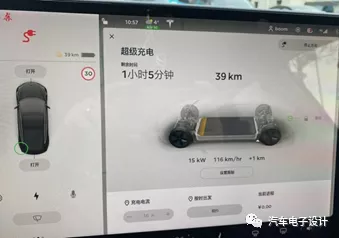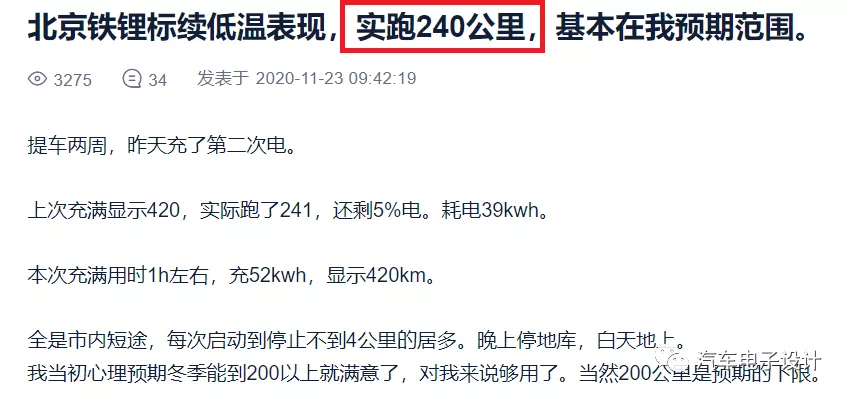Introduction
The technical roadmap from lithium iron phosphate (LFP) to ternary materials was brought about in 2017 as part of the development strategy for the battery industry based on increased energy density. This year, with Tesla’s consideration of cost, they first switched to the LFP version, and some issues gradually emerged according to the feedback from car owners:
1) After being fully charged, Tesla’s display based on mileage prediction shows much less than NEDC. According to some users on forums, prior to software optimization, 90% of the preset value for estimated range was around 335-346 km (which is Tesla’s estimated range), but after software update and charged to 100%, it can reach over 400 km.
2) The issue of fast charging speed: Fast-charging speed can drop from 100 kW to around 15 kW.
3) The problem of range loss: The estimated range of LFP batteries is lower than the actual range because of differences in energy consumption and other factors also lead to different ranges among vehicles.
The Real Issue with LFP Battery Version
1) Tesla’s strategy initially did not differ from the ternary strategy, and set the recommended value for most vehicles at 90%. Therefore, as shown in the figure below, after charging to 90%, the mileage displayed is about 300+ km. The main reason for this is to consider the high state of charge before the ternary material, which affects the calendar life and safety. Therefore, in the new LFP version, the software pushed by Tesla may not include the 90% preset protection value for LFP versions.
There is also a big issue here: if fast charging is used for recharging, there may still be a 90% upper limit for LFP version, and only slow charging will be better. Another issue with the range is the problem of loss of stored range. Combined with previous sentinel mode and other strategies, it may result in some vehicles showing that they still have 203 km when parked, but the next morning when opening the app, it only has 127 km left due to the double action of SOC estimation error and static power consumption, causing a drop of 80 km overnight.

2) The problem of fast charging in low-temperature environments is something we are all familiar with, as shown in the figure below. Due to the good heating strategy of ternary cylindrical cells, to heat these cells requires some time, so the initial power level has dropped to about 15 kW. This phenomenon is exponentially magnified when it comes to future Tesla supercharging network’s load.
3) Low Temperature Consumption and Idle Power According to the car owners, I have summarized it roughly, and there are some sudden error factors here. At around 20 degrees, the lithium iron phosphate version can go up to 410-420 km when fully charged, with a consumption rate of 11 kWh / 100 km. At around 10 degrees, when fully charged, it can reach 360-380 km, but running outside will consume 50% more than before. At around 0 degrees, if the heater is not used, the consumption rate will increase from 11 kWh/100 km to 15 kWh/100 km on average.
At present, most car owners need to prepare for charging when reaching 100 km of endurance, and they use it within the range of 350+ to 100+. Under the conditions of daily one-way travel of 30 km, the current data shows that it can still be used relatively well. The usage conditions of different car owners are different. As more and more car owners rely on supercharging and accumulate SOC errors, this problem becomes more serious.

Part 2 What are the bottlenecks for large-scale promotion of LFP?
According to Tesla’s cost-oriented logic, the use of LFP’s low-cost solution is used as a strategic weapon. From the previous round of use, the main problems are:
1) Differences in low temperature performance and ternary materials: mainly due to discounted charge and discharge characteristics
2) The consistency problem caused by the accumulation of differences in self-discharge will be reflected in the form of pressure difference of later-stage battery cells
3) The first-year life span attenuation is faster than ternary materials. Since ternary materials have an upward process, while LFP comes straight down, there are also differences in this aspect.
Summary
We originally expected LFP to be deployed extensively on 2B-end and low-end car models. Tesla’s large-scale delivery of LFP versions before winter, which goes against common sense, also allows us to see the performance of lithium iron phosphate versions before changing the software. This is very valuable for reference.
This article is a translation by ChatGPT of a Chinese report from 42HOW. If you have any questions about it, please email bd@42how.com.
